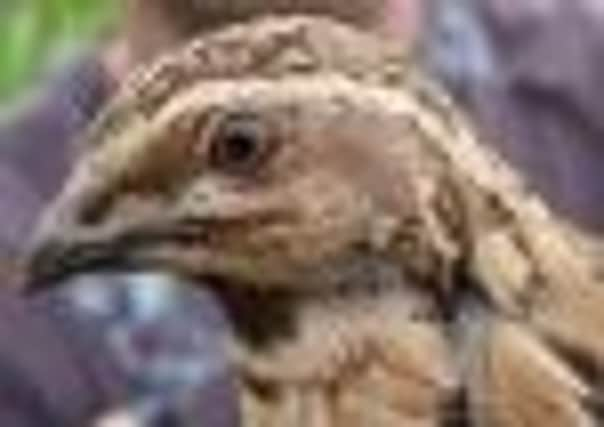Birdwatch: Game little bird heads back to Yorkshire


But one new arrival from Africa and southern Europe, the quail, is starting to sing from the depths of barley and wheat fields.
This is Europe’s only migratory game bird, like a plump little partridge and comparable in size to a skylark.
Advertisement
Hide AdAdvertisement
Hide AdThe classic view of one – if it can be called that – is the sudden eruption of a bird from dense cover which then banks and twists as it rapidly flies away before diving to earth again.
Often the only indication that a quail is present is the male’s distinctive three-note song, a sip sip sip sound which is most often described as “wet-mi-lips”.
The singer almost never emerges, although his striped black and yellow head may occasionally pop up for a moment above the corn.
The quails arriving here now may not be the last this summer. There is sometimes a second influx in late July and August, thought to be made up of both adults and young that have been forced to move further north as their breeding grounds in Africa and southern Europe dry out and become parched.
Advertisement
Hide AdAdvertisement
Hide AdNumbers vary, although in some “quail years” they become much more widespread than normal and are found all across the British Isles.
The most reliable place to look for them in Yorkshire is on Natural England’s Lower Derwent Valley nature reserve, between York and Selby, where the first six singing males were heard last week.
The best area to listen for them is from the hides at North Duffield Carrs, at the southern end of the reserve, although they are encountered throughout the site.
Up to 60 singing males have been present there over the past two years and, of these, 17 have been caught and colour-ringed.
Advertisement
Hide AdAdvertisement
Hide AdOne of these was ringed as a chick in 2009 and returned as a breeding adult the following year, showing the importance of the site for them.
There are plans to catch and colour-ring and radio track more of these elusive little birds.
There has been more good news regarding avocets this week with the RSPB announcing that they have bred at another inland site in Yorkshire, the Old Moor reserve near Barnsley.
Two chicks hatched out on Monday and more are expected from the three avocet pairs there.
Advertisement
Hide AdAdvertisement
Hide AdAvocets have also bred again this year at Astley Lake, Leeds, and the Nosterfield nature reserve, North Yorkshire.
Among birds seen in the region was a male rustic bunting in full summer plumage found off Long Lane, Filey, next to the country park on Saturday, and which remained there into the following day.
A tawny pipit has remained at Easington lagoons this week while other birds seen in the Spurn area included a pectoral and a curlew sandpiper, blue-headed wagtail and black redstart.
More common cranes have been seen in the region with four in a field near Nafferton, East Yorkshire, on Sunday and two over Primrose Valley, Filey.
Advertisement
Hide AdAdvertisement
Hide AdA purple heron was seen flying over the Tophill Low reserve, East Yorkshire, where one was present last month.
A spoonbill was seen at Wheldrake Ings, while two were seen at Hornsea Mere and four on Coatham Marsh, Teesside.